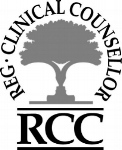Transcranial Direct Current Stimulation (tDCS)
Transcranial Direct Current Stimulation is a form of electrical stimulation that is used to treat many conditions and pathologies, both in the brain and in the body. The technology uses a positive electrode and a negative electrode (called the anode and the cathode). Electrons are streamed from the anode to the cathode. This is distinct from Transcranial Alternating Current Stimulation, in which the roles of anode and cathode switch between the electrodes.
Direct current passes a one-way current through the brain or the body. In the brain, this causes a surge in calcium ions and in sodium ions. This causes neuroplasticity(1), which makes the brain more susceptible to neurofeedback and pEMF conditioning. It increases the potential of the brain to change, learn and grow.


